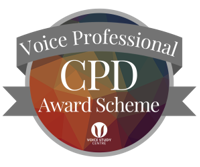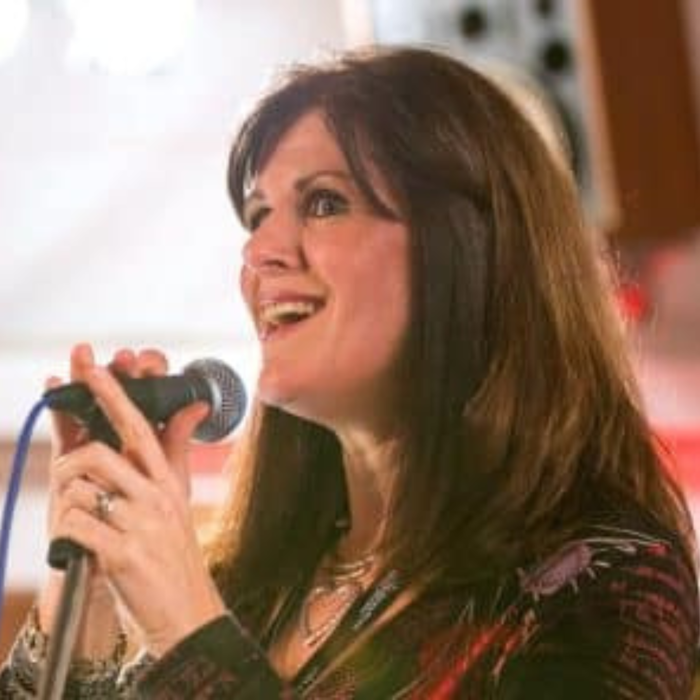Making Holistic Connections Between the Voice, Body & Emotions
Tuesday 26th March 2024, 5:00 PM - 7:00 PM (London Time)
Discover the rich and expanding capabilities possible within you as this course introduces you to the Emotional Body® method’s approach to making physical, vocal and emotional connections. The emotional effector patterns will be introduced as the primary approach during this two-hour introductory lesson. References will be made to how Estill Voice Training® and gentle movement lessons inspired by the Kinēsa® process of somatic education can also assist individuals in expanding their expressive capabilities and developing harmonious communications throughout the body.
Emotional effector patterns are precise breathing and muscle manipulations linked to specific emotional feelings. Each effector pattern has three parts: (1) a breathing pattern, (2) facial expression, and (3) postural attitudes. All three parts work together to create one effector pattern, or biological code, that directly stimulates nerves, cells and organs. The resulting pattern works like a key that opens the door for one particular basic emotion to express throughout the entire body. The patterns are based on scientific findings, independent of gender or social heritage influences, and result in the expression of basic universal emotions and modes of expression.
Estill Voice Training® is an evidence-based system that promotes body awareness and mindfulness and provides exercises designed to develop control of specific anatomical areas of voice production that contribute to the sound and feeling of the voice.
Kinēsa is a somatic method that combines kinaesthetic movement lessons with physical emotion regulation techniques and somatic sensing methods, all designed to assist the individual in raising their awareness of their individual habits, and helping them assess and consider opportunities to form new behaviours that might improve their overall wellbeing.
During this lesson participants will explore…
- Emotional Effector Patterns and how they could impact the physical and vocal expression;
- Vocal expressions of emotion and feelings, and the impact internally and externally of what occurs with the shared energy that sounded expressions create;
- Fully connecting the voice and body with the patterns, along with intentions, desires, and actions in the creation of more consistent, holistic expressions;
- Concepts around physical, vocal and emotional personal tolerance levels, identifying and setting personal boundaries, and considering consent-based agency around emotional expressions;
- Centering, destressing, revitalizing and restoring the nervous system to achieve a calm and restful state, and a quiet mind.
Professor Laura Bond
Laura Bond is a Full Professor of Drama and Interdisciplinary Studies at UNC Asheville teaching acting, vocal and physical expression, voice-over, voice acting, and emotional expression.

Attend this course for as little as £22 as part of the Voice Professional Training CPD Award Scheme.
Learn MoreSorry, this is an archived short course...
We have plenty of upcoming short courses coming soon. See details of some of them below or look at the full list of short courses.

Thursday 26th June 2025
5:00 PM - 7:00 PM
Tuesday 1st July 2025
5:00 PM - 7:00 PM
(London Time)
The Contemporary Classical Singer: Incorporating New Music into Vocal Pedagogy!

Page Stephens
There are evolving expectations for vocalists, who now need to perform in a variety of styles beyond traditional classical music. In this two-part course, Page Stephens argues that voice teachers should incorporate contemporary repertoire and techniques into their lessons to help singers grow in expressivity, flexibility, and economic opportunities. The course will cover industry trends, cultural pressures, and economic benefits of contemporary music, and provide tools for integrating new music into vocal education. Interviews with professionals will highlight the strengths and weaknesses observed in the field, and strategies for teaching new music will be discussed.


Wednesday 2nd July 2025
2:00 PM - 4:00 PM
(London Time)
The identity politics of accent learning!

Jenru Wang
Jenru Wang has an MFA in Voice Studies with distinction from The Royal Central School of Speech and Drama in London - in this session, he will begin to explore the complexities accent coaches might face in their work, examining the intersection of language, identity, and cultural sensitivity. Participants will explore how to navigate challenging situations in different contexts and understand what to do—and avoid—when working with diverse clients and materials.


Thursday 3rd July 2025
5:00 PM - 7:00 PM
(London Time)
Vocal “Decathletes” – inside the hidden world of Session Singing!

Kim Chandler
What is a session singer? Officially it’s a freelance, short-term “singer for hire” brought in to be part of a live or recorded musical project. However, it’s more generally understood to be the “behind-the-scenes” singer who is regularly booked for paid recording work. The type of work (and pay) varies a lot. Session singing is a side of the music industry that is largely hidden from the public and isn’t easy to find out much about, even online. Join Kim Chandler as she unpicks this topic, based on 35 years of session singing!
